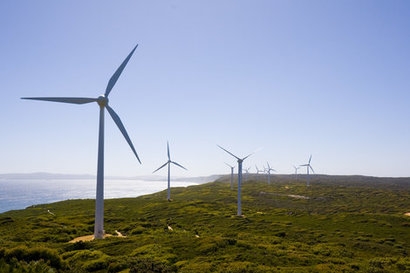
ARENA is open for Expressions of Interest until 9 May 2018 5pm AEST and is committing up to $10 million funding to improve ‘5-minute ahead’ forecasts for wind and solar farms operating in the National Electricity Market (NEW).
In partnership with the Australian Energy Market Operator (AEMO), ARENA is seeking to demonstrate wind and solar farms can provide more accurate forecasts of their output into AEMO’s central dispatch system. At present, AEMO is responsible for forecasting how much electricity will be generated by wind and solar farms, the output of which varies depending on the weather and time of day.
As a part of this trial, wind and solar farms will be able to submit their own forecasts to AEMO. This will allow local measurements to be combined with AEMO’s modelling to improve the overall accuracy.
ARENA is seeking proposals for projects that will deliver ‘5-minute ahead’ forecasts, explore the commercial benefits to wind and solar farms of investing in forecasting technology and examine factors that affect the accuracy of forecasts in different weather, operational conditions and geographies.
Expressions of interest are sought in relation to utility scale wind and solar, including from generators, forecasting technology companies and turbine and solar panel manufacturers. Proposals may include multiple generators and forecasting technologies.
ARENA CEO Ivor Frischknecht said this initiative, which originated in ARENA’s A-Lab innovation workshop last year, could allow wind and solar farms to be better integrated into the grid while simultaneously improving grid security and reducing energy costs.
“As more variable renewables enter the market, we need to improve the accuracy of our short-term forecasts so we can anticipate what will happen as a cloud passes over a solar farm or if the winds change” he said. “At present, wind and solar farms can be disadvantaged if their available output doesn’t match the central forecast. If the forecasts are too low, wind and solar farms are restricted in how much electricity they can paid to produce. If forecasts are too high, the wind or solar farm may be obliged to pay for the cost of stabilising, which increases the price of electricity and is ultimately passed on. We are hoping this initiative – which brings together wind and solar farms with forecasting technology companies and manufacturers – will change how forecasts for variable renewable energy are used in the electricity market”.
AEMO Managing Director and CEO Audrey Zibelman added that the initiative, if successful, would be another step forward in strategically integrating renewable generation into the National Electricity Market.
“Accurate short-term forecasts are essential for balancing supply and demand, and avoiding grid instability,” Ms Zibelman said. “If we can more accurately predict demand and the output of all types of generation, we expect this will reduce the need for additional frequency control services in the future, which the market pays for”.
Expressions of Interest are open now. Successful applicants will be notified in June 2018 and invited to submit full applications.
For additional information:

